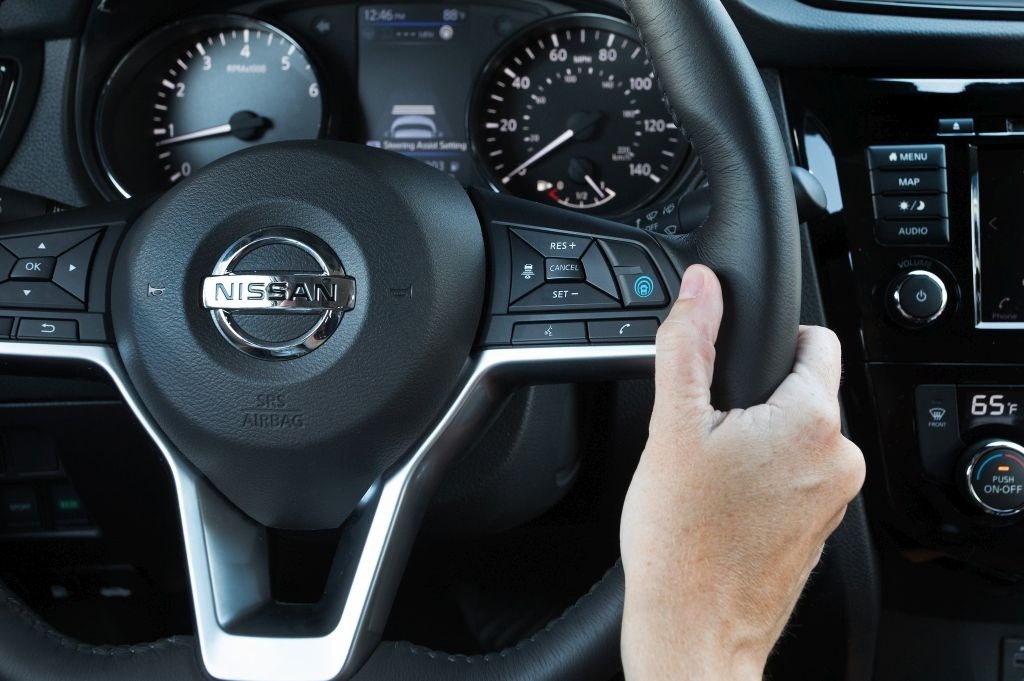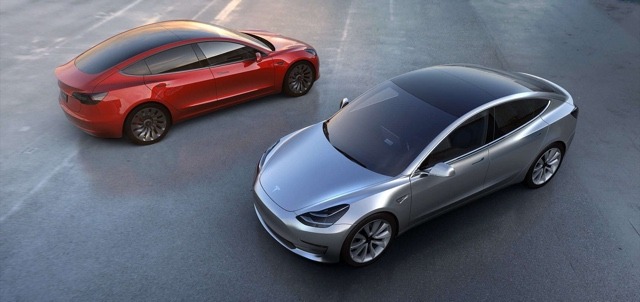Search the Community
Showing results for tags 'autonomous driving'.
-
Nissan is releasing the next version of ProPilot in Japan in the fall of 2019 on the new Nissan Skyline (Infiniti G50 to us Yanks), but here in the U.S., we'll need to wait a bit longer while the system undergoes further testing and mapping of the US highway system. ProPilot 2.0 makes a big jump in autonomous driving capability, the biggest of which is true hands-off highway driving. The system can switch lanes and pass cars, but those moves require a hands on approach from the driver. ProPilot 2.0 also takes orders from the Navigation system, while using seven cameras, five radar sensors, and 12 sonar sensors to pilot the car. The system will only work on highways where the roads have been mapped in 3D High-Definition. Japan's more compact nature means that most of the roads there have already been scanned. The US, with its wide open space will take longer to map. Currently ProPilot Assist (1.0) is offered only on the Leaf, Rogue, Rogue Sport, and Altima. In the US, 60 percent of Leaf buyers and 40 percent of Rogue buyers opt for the 1.0 version of the system. Eventually Nissan wants to expand ProPilot to 20 models. View full article
- 2 replies
-
- autonomous driving
- nissan
-
(and 1 more)
Tagged with:
-
Nissan is releasing the next version of ProPilot in Japan in the fall of 2019 on the new Nissan Skyline (Infiniti G50 to us Yanks), but here in the U.S., we'll need to wait a bit longer while the system undergoes further testing and mapping of the US highway system. ProPilot 2.0 makes a big jump in autonomous driving capability, the biggest of which is true hands-off highway driving. The system can switch lanes and pass cars, but those moves require a hands on approach from the driver. ProPilot 2.0 also takes orders from the Navigation system, while using seven cameras, five radar sensors, and 12 sonar sensors to pilot the car. The system will only work on highways where the roads have been mapped in 3D High-Definition. Japan's more compact nature means that most of the roads there have already been scanned. The US, with its wide open space will take longer to map. Currently ProPilot Assist (1.0) is offered only on the Leaf, Rogue, Rogue Sport, and Altima. In the US, 60 percent of Leaf buyers and 40 percent of Rogue buyers opt for the 1.0 version of the system. Eventually Nissan wants to expand ProPilot to 20 models.
- 2 comments
-
- autonomous driving
- nissan
-
(and 1 more)
Tagged with:
-
To say that today the average auto is a supercomputer would be an understatement. Auto's are being asked to do so much now that many take it for granted what they can do and others wonder why self driving auto's are not already normal here after years of self driving auto's being promised. Part of this is computer tech only now getting up to speed, other reasons is adoption by people. Consumer Reports decided to check out just how good is autonomous driving and is it more of a Semi-automated driving. Consumer Reports has compared the Cadillac Super Cruise, Tesla's AutoPilot along with Nissan's ProPilot and Volvo's Pilot Assist. While GM, Tesla and Volvo did not respond to Consumer Reports request for response, Nissan did issue a statement saying that their ProPilot Assist system is available on several models all of which cost tens of thousands of dollars less than the others in the report. While CR has tested the automated driving systems for years, this is their first official in depth testing of the systems. The testing was conducted on both private and public roads to insure real world results. With a system that uses a combination of cameras, radar and other various sensors to map, monitor and react to traffic conditions, each system had its limitations. Cadillac Super Cruise only works on divided highways that have been mapped by GM. Tesla Autopilot can work on small, curvy roads with poor lane markings but operates erratically in those situations. Nissans ProPilot did better than Tesla and Volvo for keeping the drivers engaged but just under Cadillac's Super Cruise. Over all Cadillac's Super Cruise was judged to be the best balance of High-tech capabilities with car operational safety and driver engagement. Consumer Reports does point out that Super Cruise is NOT GM's Cruise self-driving technology that Honda has just bought into to help bring to market. Reuters Story
-
Tesla's CEO Elon Musk teased last week of a new master plan that would be appearing early this week. But like the launch of one of their new vehicles, there was a bit of delay. Last night, the plan was unveiled. If you were hoping for some exciting announcements, then you'll be disappointed with this plan. One of the big parts of 'Master Plan, Part Deux' is to "the major forms of terrestrial transport." What this means is the company is working on developing a compact SUV and a and a "new kind of pickup truck." Musk also says early development work has begun on a Telsa-Semi (Musk's name, not ours) and methods of urban transportation. Musk goes on to talk about developing Tesla's semi-autonomous systems further. A lot of this will rely on utilizing fleet learning (i.e. Autopilot) to help speed up development to a fully autonomous system. The post says the world could be ready to accept autonomous vehicles after they've driven 6 billion collective miles. Using three million miles per day as an estimate, it could take up about 2,000 days (about 5.5 years). Musk stands behind the Autopilot, saying “deploying partial autonomy now, rather than waiting until some point in the future” because “when used correctly, it is already significantly safer than a person driving by themselves (sic) and it would therefore be morally reprehensible to delay release simply for fear of bad press or some mercantile calculation of legal liability.” Other bits of this master plan include, Setting up a car sharing service allowing owners to make some cash Creating solar-panel roofs with "seamlessly integrated battery storage." (Would involve the merger of Tesla and solar panel installer SolarCity) Source: Tesla View full article
- 5 replies
-
- Autonomous Driving
- Compact SUV
-
(and 4 more)
Tagged with:
-
Tesla's CEO Elon Musk teased last week of a new master plan that would be appearing early this week. But like the launch of one of their new vehicles, there was a bit of delay. Last night, the plan was unveiled. If you were hoping for some exciting announcements, then you'll be disappointed with this plan. One of the big parts of 'Master Plan, Part Deux' is to "the major forms of terrestrial transport." What this means is the company is working on developing a compact SUV and a and a "new kind of pickup truck." Musk also says early development work has begun on a Telsa-Semi (Musk's name, not ours) and methods of urban transportation. Musk goes on to talk about developing Tesla's semi-autonomous systems further. A lot of this will rely on utilizing fleet learning (i.e. Autopilot) to help speed up development to a fully autonomous system. The post says the world could be ready to accept autonomous vehicles after they've driven 6 billion collective miles. Using three million miles per day as an estimate, it could take up about 2,000 days (about 5.5 years). Musk stands behind the Autopilot, saying “deploying partial autonomy now, rather than waiting until some point in the future” because “when used correctly, it is already significantly safer than a person driving by themselves (sic) and it would therefore be morally reprehensible to delay release simply for fear of bad press or some mercantile calculation of legal liability.” Other bits of this master plan include, Setting up a car sharing service allowing owners to make some cash Creating solar-panel roofs with "seamlessly integrated battery storage." (Would involve the merger of Tesla and solar panel installer SolarCity) Source: Tesla
- 5 comments
-
- Autonomous Driving
- Compact SUV
-
(and 4 more)
Tagged with:




